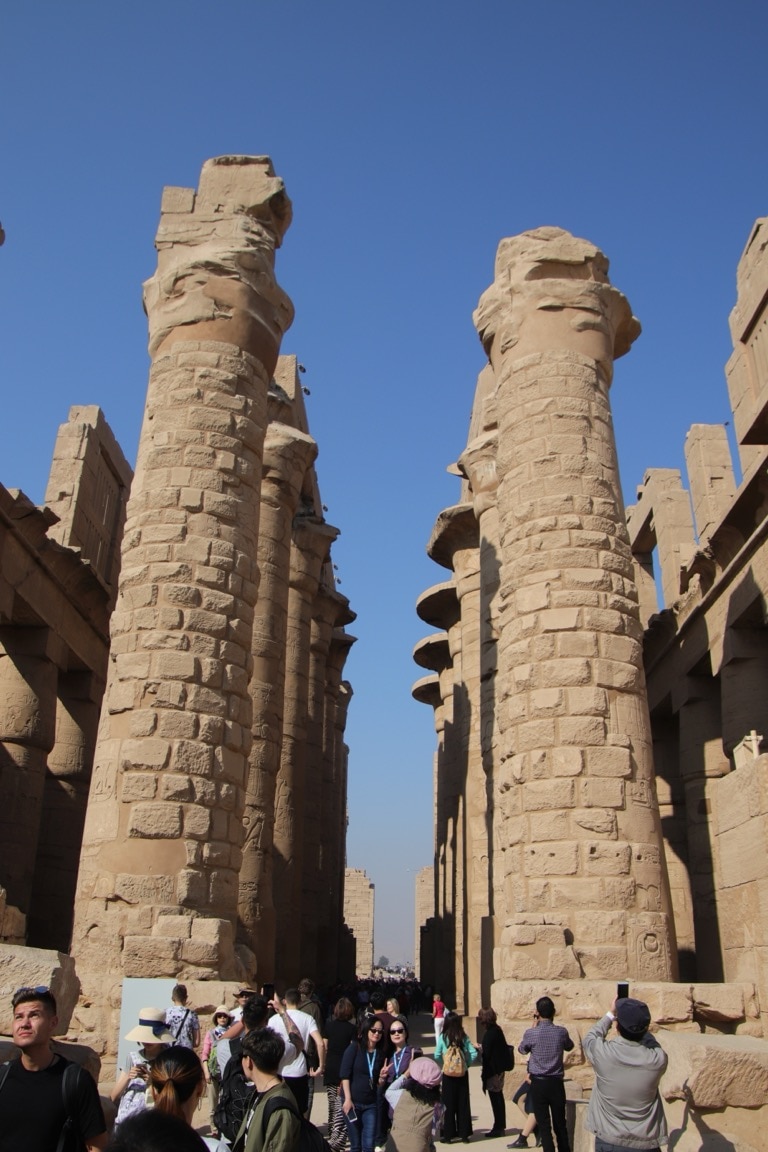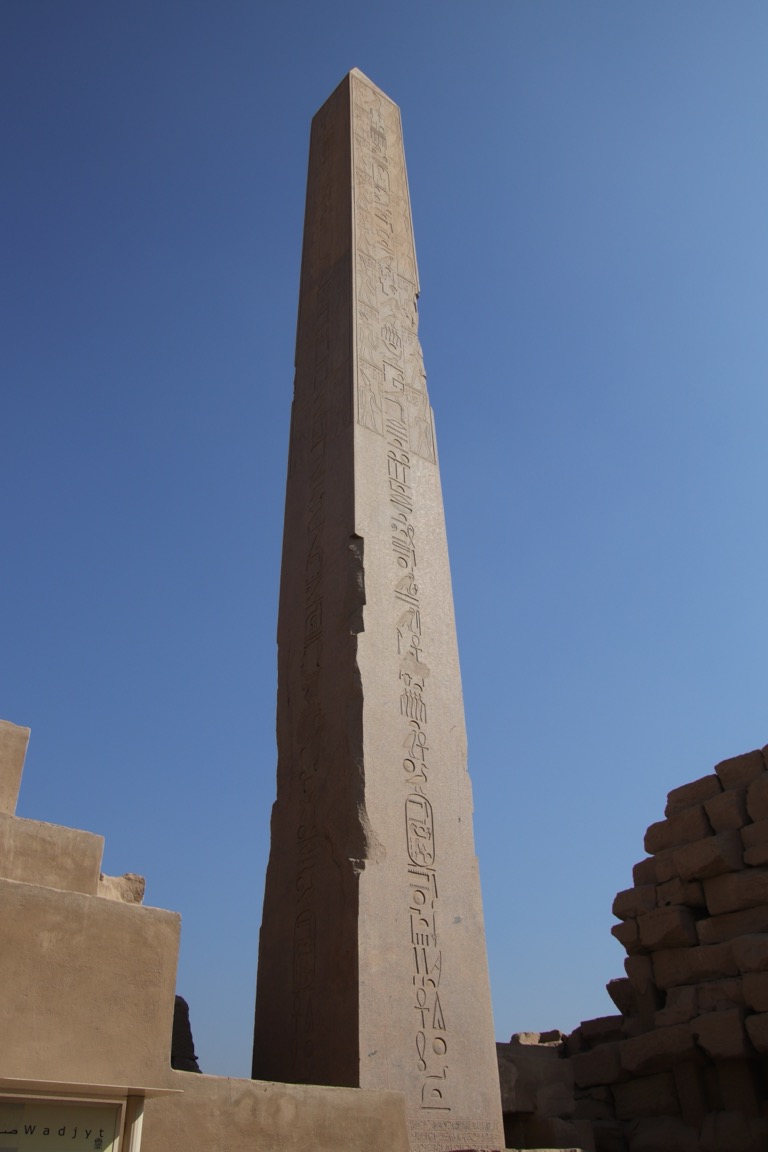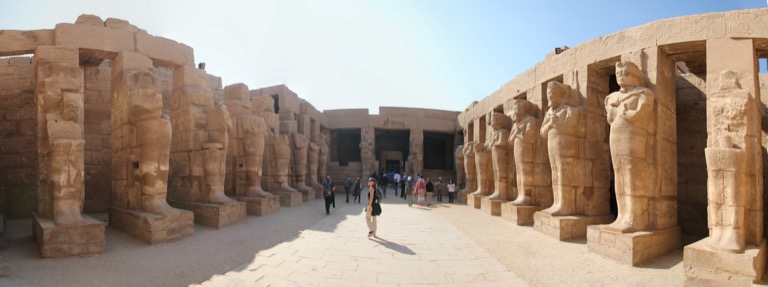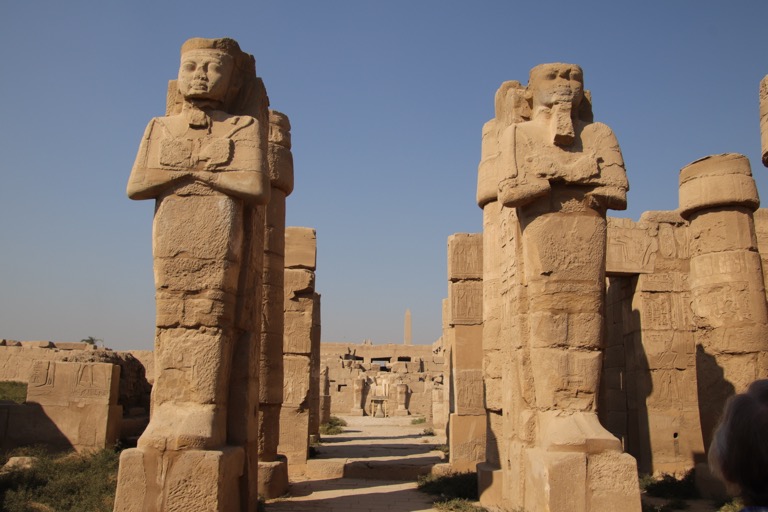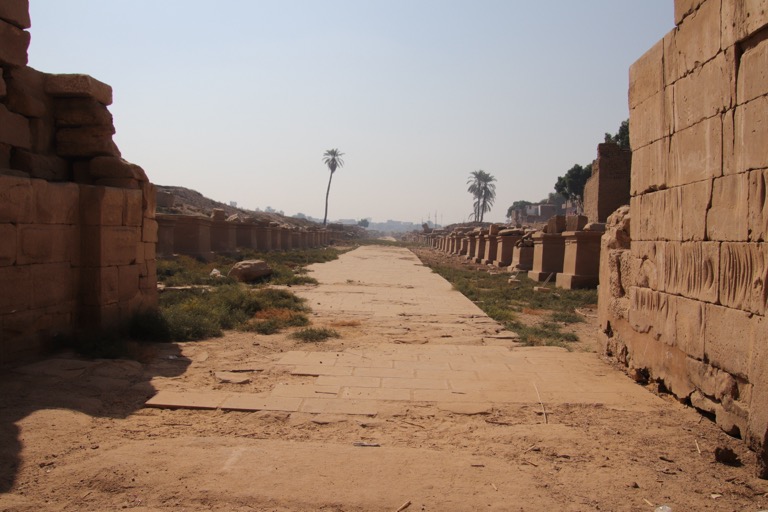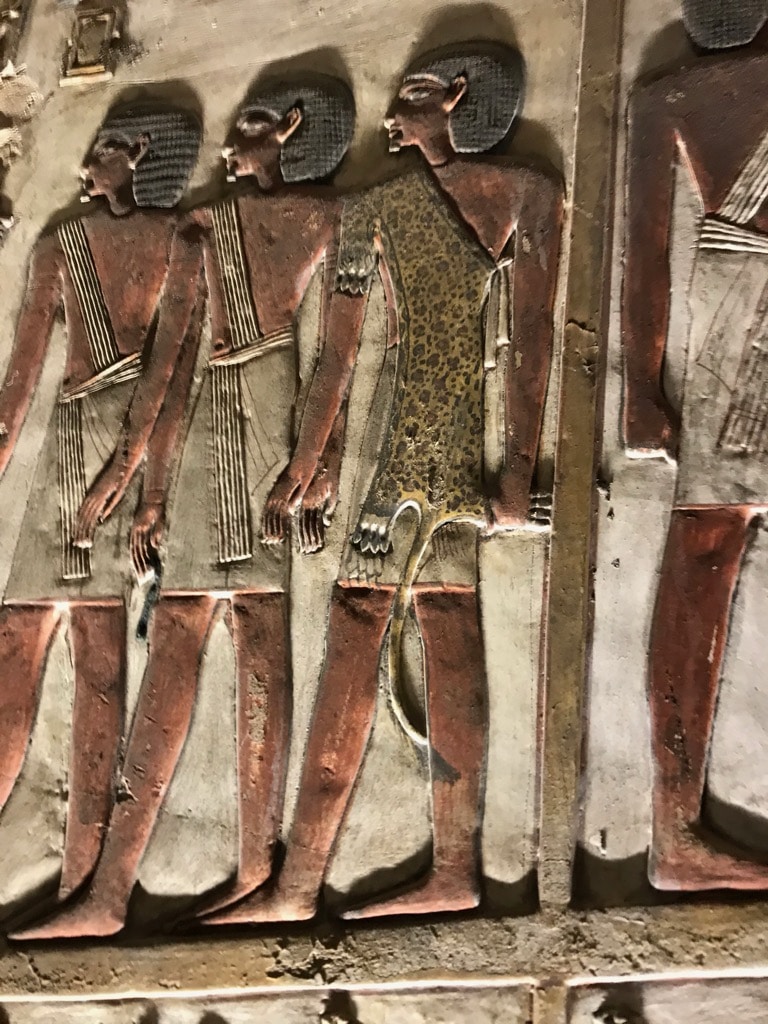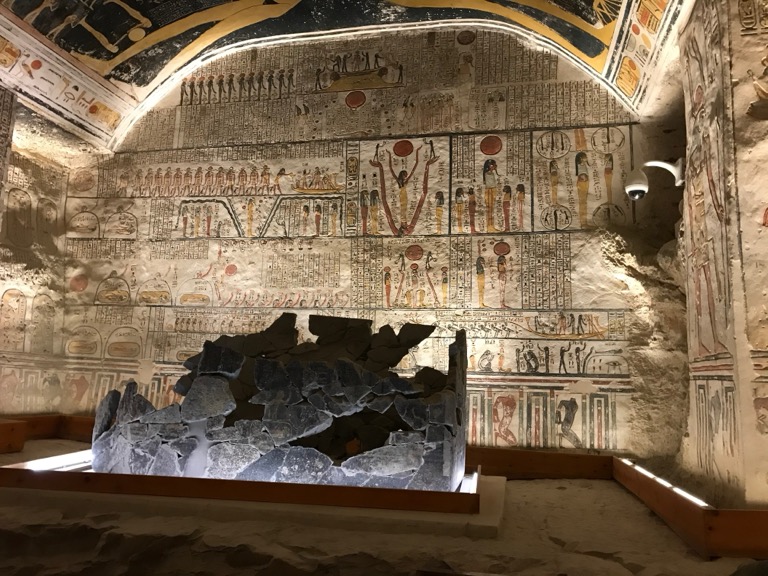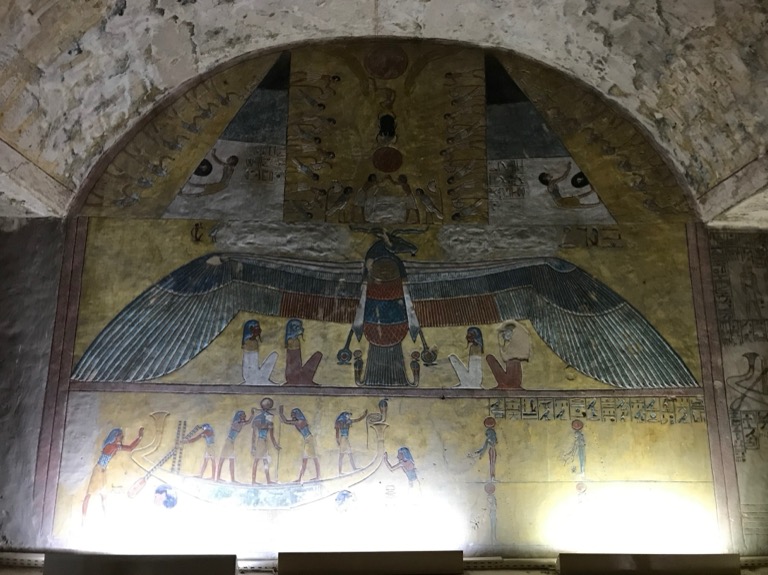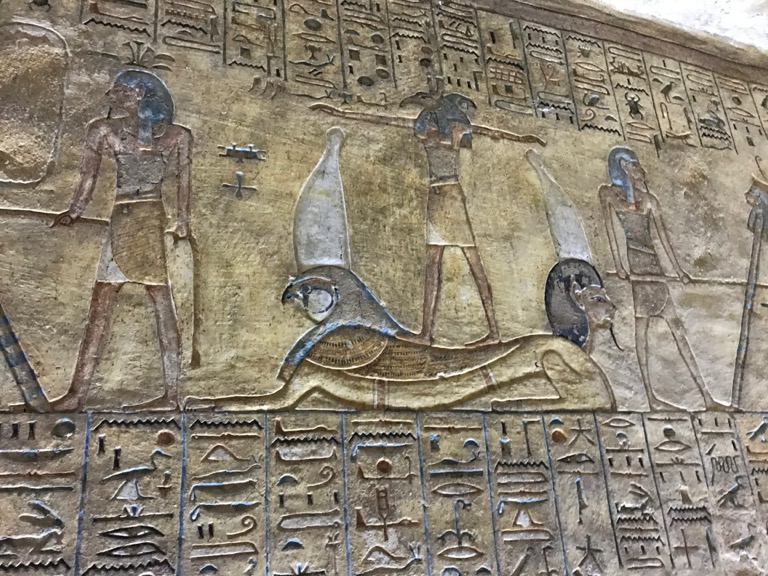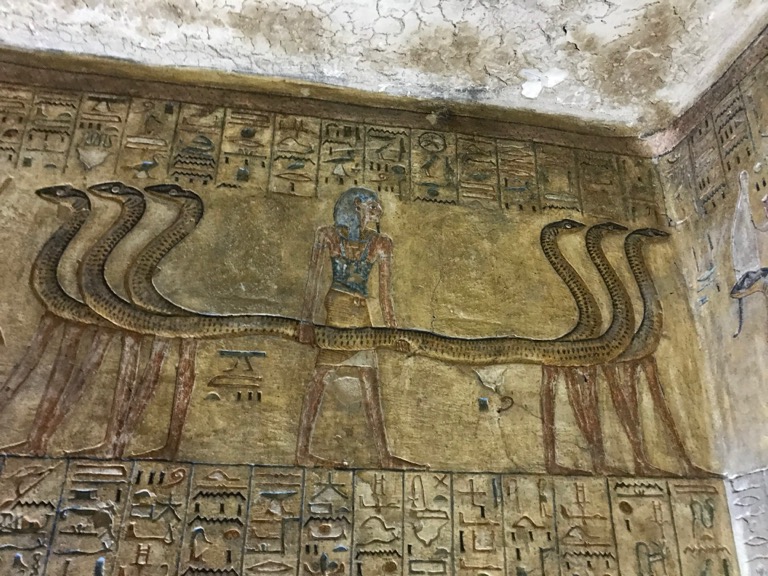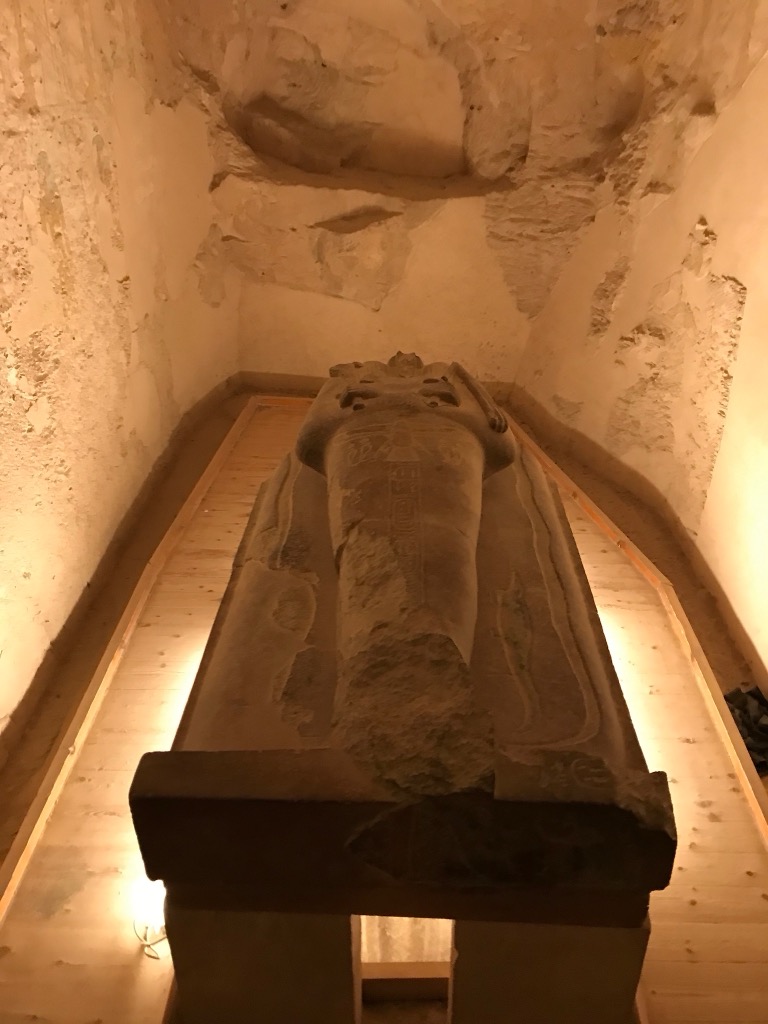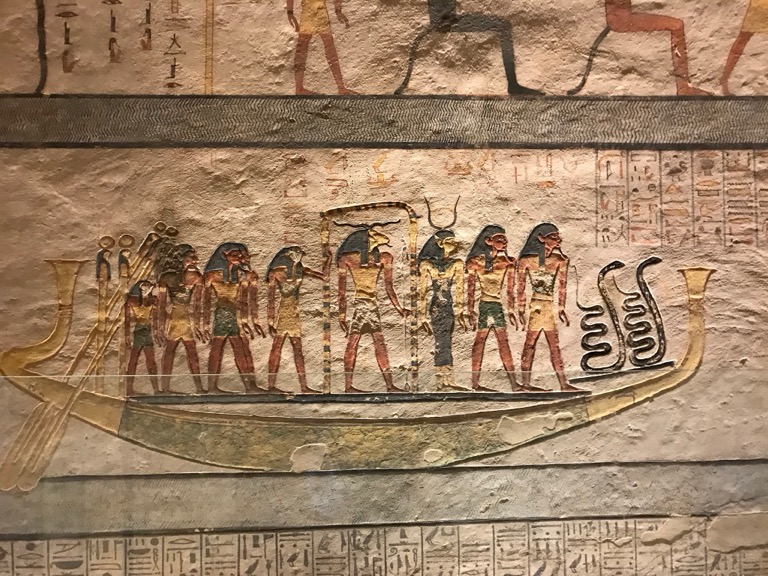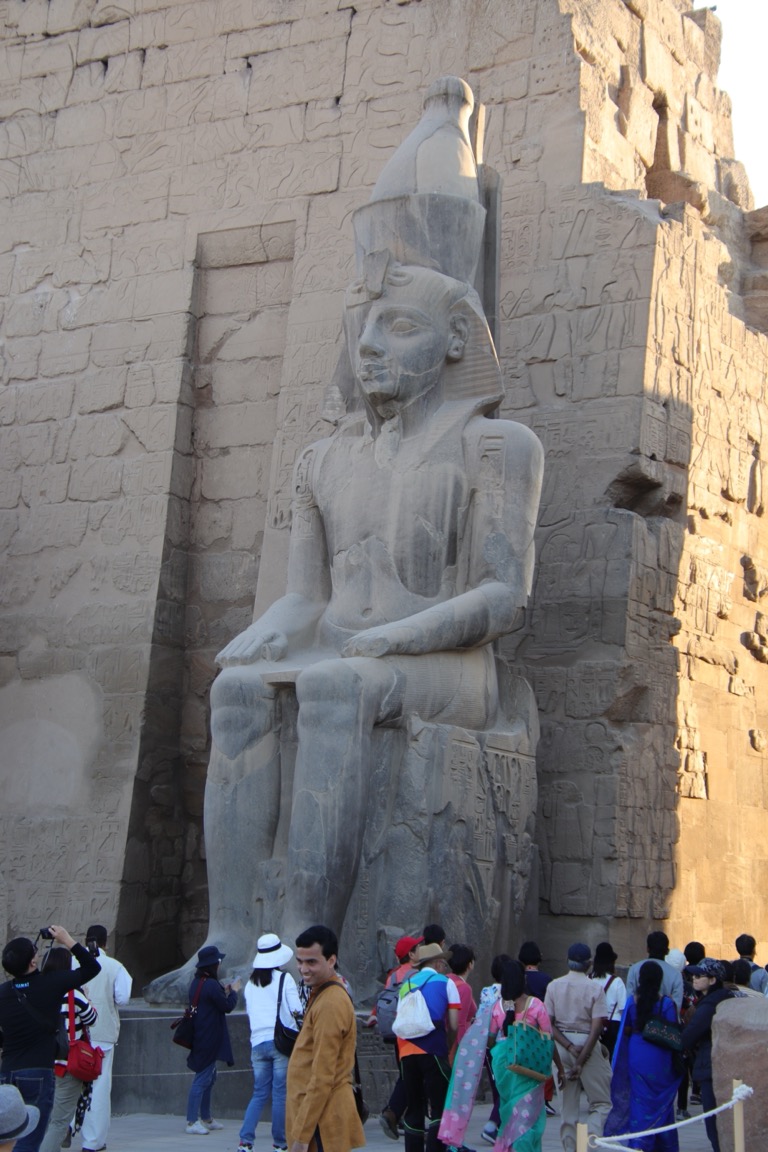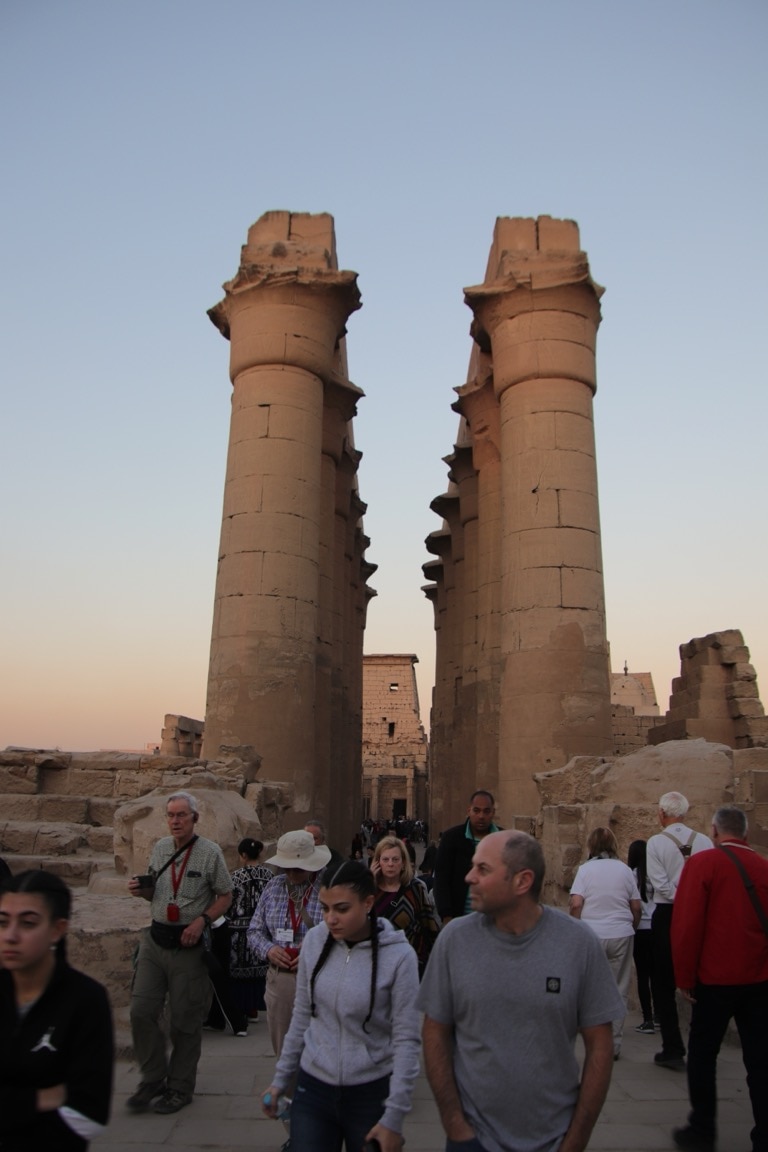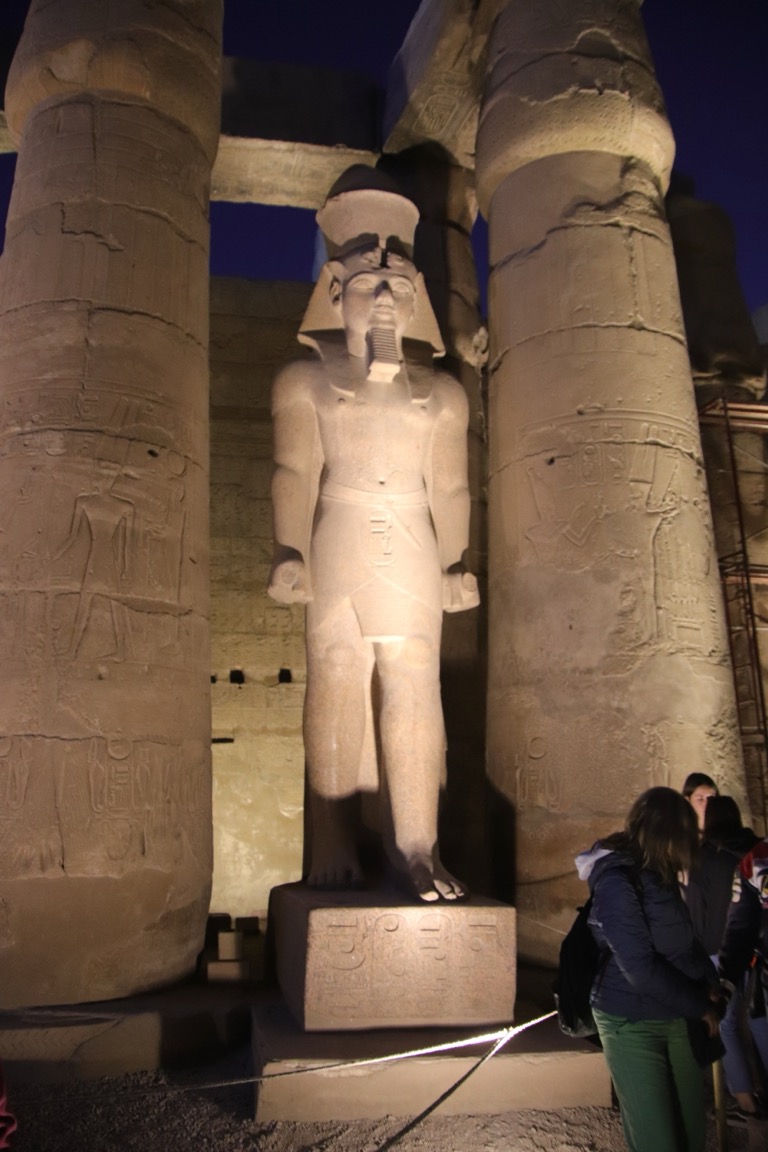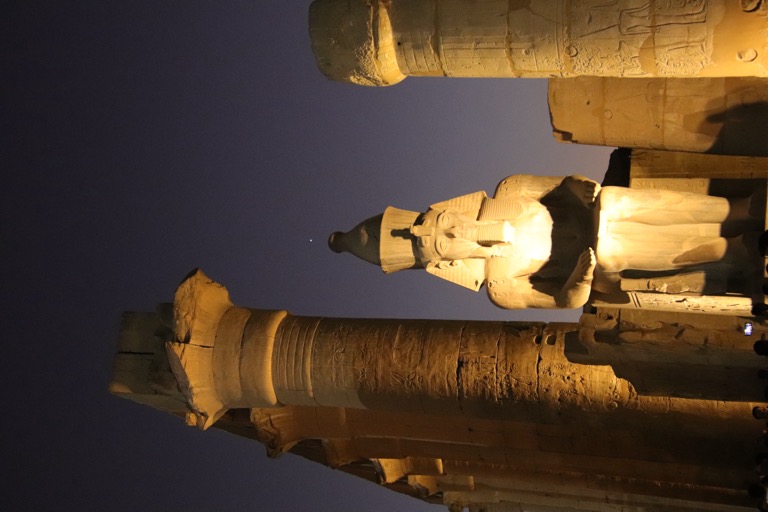on
Karnak and Luxor Temples
Today is a packed day, Karnak Temple in the morning, then a trip out to the Valley of the Kings for some more tombs, then Luxor Temple in the late afternoon.
These are in the modern town of Luxor, over the years it’s had many names. In the Middle Kingdom and New Kingdom it was called Thebes, and was the capital of Upper Egypt. With the two major temples, the priests here had considerable power.
Karnak Temple complex is one of the largest temple complexes in Egypt. It’s the second most visited site in Egypt behind the pyramids. A couple hour visit doesn’t do it justice. The buildings are large, and most all roofs are missing. Construction started in the Middle Kingdom and continued through the New Kingdom into the Ptolemic period. 1000+ years of construction leads to lots of chaos, when Pharaohs were willing to “borrow” from previous construction as well. Every Pharaoh wanted their name on something at Karnak.
The avenue of the Sphinxes stretches between the Karnak Temple complex and the Luxor Temple Complex. It’s two kilometers long and lined with sphinxes. It’s closed yet, and it’s not possible to walk between Karnak and Luxor as there is a mosque and a church built over it in the middle.
Then we skipped some shopping, lunch and free time to make an extra trip back out to the Valley of the Kings. The tomb of Seti I is open right now, it’s been closed for years, and we decided to go see it. When we were in London this Fall, we visited the Sir John Soane museum which has the sarcophagus of Seti I. It is spectacular.
Next up was The tomb of Ramses V/VI. This was another special ticket, but it is inexpensive. I highly recommend this tomb if you have time to add one on, as the special ticket means it’s not very crowded, and it’s a nice tomb. Ramses VI completed this tomb that his father started, but abandoned when the digging broke into another tomb.
We could then visit three of the standard open tombs on our entrance ticket. We chose the tomb of Tausert(Twosret) and Setnakht. Seti II was originally buried in this tomb with his Queen Twosret. After he died, she ruled as regent for his son by another wife. When the son died, she ruled as pharaoh for a few years and was buried with Seti II. Then Setnakht, who followed Twosret, and started the Twentieth dynasty, had Seti II moved to the tomb next door, and he replaced her image in this tomb with his own.
This is the bottom of the sarcophagus lid. They carved a relief of the Pharaoh on the bottom.
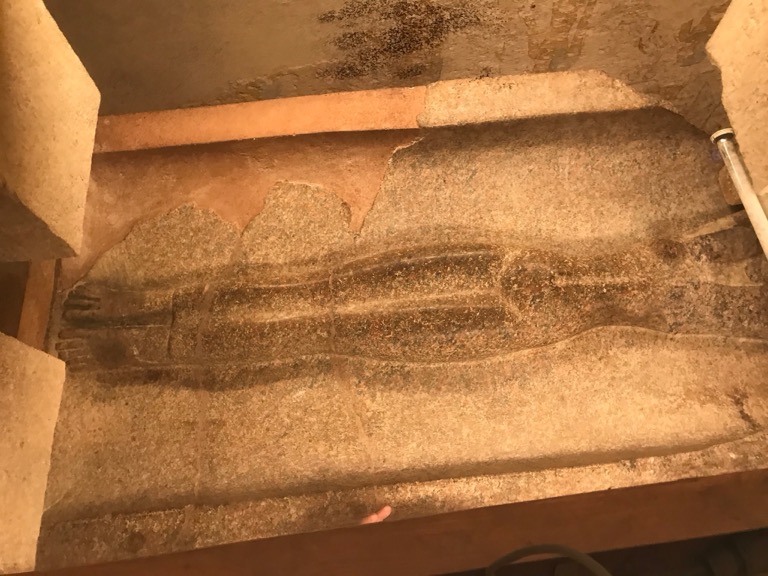
We made it back to the boat just in time to leave again for the late afternoon tour of Luxor temple. This is another temple complex just two kilometers from Karnak. Luxor temple gets rather busy in the evening, but it’s a good time to see it.
Venus was very bright in the clear sky, so I stay late after the buses departed and took pictures with Venus and the various statues.
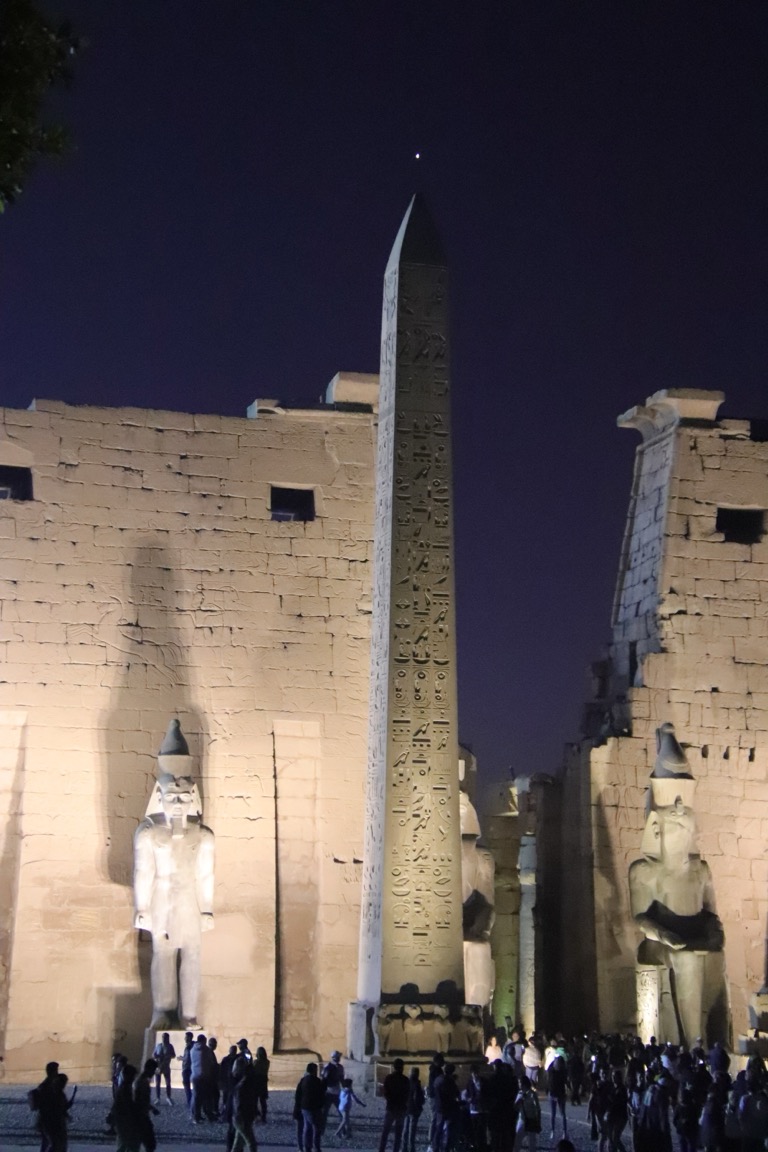
I walked back to the boat, it was a little over half a mile as the crow flies, I had to go a bit further and there was a section without a sidewalk, but plenty of locals just walking down the street.
